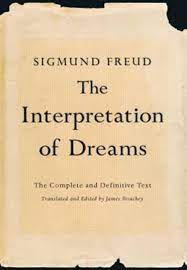The Interpretation of Dreams
Sigmund Freud is the one of the most influential and controversial theorists of the 21st century. This paper discusses Sigmund Freud, from his life to his theory on dreams as discussed in his book The Interpretation of Dreams.
Sigmund Freud is recognized as the father of psychoanalysis. The work of Sigmund Freud aims at revolutionizing the study of dreams. In his book The Interpretation of Dreams, Freud analyzed dreams for the purpose of understanding personality aspects in relation to pathology. He believed that when people explain their own behavior, they rarely provide a true account of their motivation. Nevertheless, it is not that a person is deliberately lying.
Freud was born on May 6, 1856 to Galician Jewish parents in Austria. In 1881, he qualified as a medical doctor from the University of Vienna. Upon completion of his habilitation, Freud got an appointment as a docent in neuropathology. In 1902, he was promoted to an affiliated professor. Sigmund Freud resided in Vienna. He established his clinical practice in Vienna in 1886. In 1938, he moved away from Austria in the bid to escape the Nazi regime. Freud died in 1939 in exile in the UK.
Freud is considered the most famous figure as well as one of the most controversial and influential thinkers of the 20th century. His work and theories helped in shaping perspectives on therapy, sexuality, memory, personality and childhood. Out of Freud’s legacy grew several major thinkers who contributed to his work, while others have developed new theories to oppose Freud’s work.
Freud is famous for founding psychoanalysis, and for creating a wordlist that has been embedded within the vocabulary of western society. Through his theories, he introduced such vocabularies as neurotic, Freudian slip, cathartic, repression, denial, and libido.
Sigmund Freud introduced his theory on dreams in his book The Interpretation of Dreams. In the book, Freud explores the theory of the unconscious in line with dream interpretation and establishes ideas that would later be known as the theory of the Oedipus Complex. According to Freud, dreams refer to all forms for fulfillment of wishes; they involve attempts by the unconscious part of the brain to resolve any conflict arising from the past (Freud 3).
The fact that the information stored in the unconscious is disruptive and keeps disturbing a person implies that it cannot pass to the unconscious without alteration by a censor in the preconscious. When a person dreams, the preconscious tends to be more inactive in its duty of censoring information than in times when the person is awake. Therefore, information has to be distorted in the unconscious mind as the meaning of it proceeds to be censored.
In most cases, images in dreams are not a true representation of what they appear to be, and thus require a deeper interpretation for purposes of informing the structures of the unconscious. Accordingly, people struggle to remember their dreams when the superego is at work. The Superego plays the role of protecting the Ego from disruptive images and wishes conjured by the Id.
Freud proposed the condensation phenomenon, though which he suggested that a simple image or symbol presented in a dream is capable of many meanings. In line with this thinking, Freud focused on details during psychoanalysis and even requested his patients to tell him everything including what they might have termed as trivial. For instance, applying the phenomenon of free association, he could ask patients to interact freely and tell him whether they had seen any sign on the wall and what the sign actually was.
While Freud focused on individual biological drives, his colleagues such as Adler, Jung and Breuer did not subscribe to these ideas. According to Freud, when a person sees a hollow image in his/her dreams, such as a cave or a box, this may symbolize a womb. A long image may symbolize a penis. Critics attacked these statements and labeled Freud as a misanthrope or sexist on the ground that he overemphasized the role of instinct, implying that he perceived human beings as wild beasts.
It is interesting to note that Freud’s ideas had a very strong impact on psychology that a school of thought was established from his work. Although psychoanalysis was eventually replaced by behaviorism, the school of thought had a long-lasting impact on both psychotherapy and psychology. A limitation of Freud’s work is that most of his ideas were drawn from cases studies and clinical cases, which made it difficult to generalize his findings to a larger population (Mitchell and Black 102).
Psychoanalysis theory is an illustration of a global therapy that aims to help patients in bringing about major changes of their perspective about life. According to Wittels and Freud (47), psychoanalysis is based on the belief that the prevailing maladaptive perspectives are closely related to deep-seated personality traits. Most global therapists are guided by the contrary approaches that focus majorly on reduction symptoms such as behavioral and cognitive approaches.
Works Cited
Freud, Sigmund. The interpretation of dreams. Read Books Ltd, 2013.
Mitchell, Stephen A., and Margaret Black. Freud and beyond: A history of modern psychoanalytic thought. Basic Books, 2016.
Wittels, Fritz. Sigmund Freud (RLE: Freud): His Personality, His Teaching and His School. Routledge, 2013.
Want help to write your Essay or Assignments? Click here


